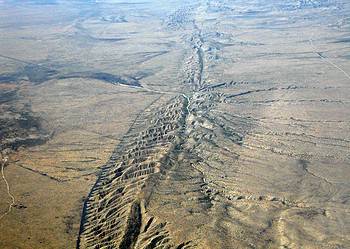It’s been suggested for a while that tides can have an impact on earthquakes that occur along mid-ocean ridges. However, no one knew why the frequency increased during periods of low tides. However new research might have found an answer.
A study published in Nature Communications by Christopher Scholz and Columbia University has found that it comes down to the magma below the mid-ocean ridges. The research was made possible by a network of seafloor instruments along the Pacific’s Juan de Fuca ridge — a mid-ocean spreading center and divergent plate boundary located off the coast of the Pacific Northwest region of North America.
“Everyone was sort of stumped, because according to conventional theory, those earthquakes should occur at high tides,” explained Scholz, a seismologist at Columbia University’s Lamont-Doherty Earth Observatory. “It’s the magma chamber breathing, expanding and contracting due to the tides, that’s making the faults move.”
Since most mid-ocean ridges feature vertical faults — those featuring steeply inclined planes — scientists assumed earthquake-generated slips would most likely occur at high-tides since the upper block slides down with respect to the lower one during movement. But seismic data was actually showing that the opposite occurred; the fault slips down during low tide, when forces are actually pulling upwards “which is the opposite of what you’d expect,” said Scholz.
In the end, it all came down to the volcano’s magma chamber, a component no one had yet considered as part of this mechanism. The team realized that when the tide is low, there is less water sitting on top of the chamber, so it expands. As it puffs up, it strains the rocks around it, forcing the lower block to slide up the fault, and causing earthquakes in the process.
When the team charted the earthquake rate versus the stress on the fault, they realized that even the smallest amount of stress could produce an earthquake. The tidal data helped to calibrate this effect, but the triggering stress could be caused by anything — such as the seismic waves from another earthquake, or fracking wastewater pumped into the ground.
“People in the hydrofracking business want to know, is there some safe pressure you can pump and make sure you don’t produce any earthquakes?” said Scholz. “And the answer that we find is that there isn’t any — it can happen at any level of stress.”
Scholz also adds that the tidal earthquakes in this region are “so sensitive that we can see details in the response that nobody could ever see before.” Of course, the scale of things should also be considered: small stresses over a small area isn’t going to trigger a massive earthquake.







